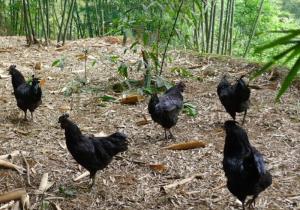1. Selection of brooding season
Generally, the survival rate of brooding is high in late spring and summer and autumn. In other seasons, it is also possible to breed chicks, but better conditions should be created.
2. Drinking water
After receiving the chickens, they should drink 0.2 ‰ potassium permanganate water first, and then they should be fed 2~4 hours later. Don't stop after you start drinking. Drink warm boiled water within 20 days of age, and use a tower shaped drinking fountain to supply water to prevent the chicks from drowning. Chicks generally drink 1.6 times more water than they eat.
3. Open food
Start eating on the second day after shelling. It is good to feed formula feed. At the beginning of the meal (within 3 days), feed broken rice, sesame or millet soaked in boiling water. Every hundred chicks should be fed 3~5 cooked eggs every day, and the feed should be sprinkled on the plastic cloth so that the chickens can eat freely. From the 5th day, it can be fed with fried broken rice and chicken formula feed. The feed formula is: sorghum 5.0%, fish meal 10.0%, corn 54.13%, barley 5.0%, bean cake 16.0%, bran 4.0%, leaf meal 3.0%, bone meal 2.5% and salt 0.37%. The crude protein in the feed should reach 20.8%, the metabolic energy should reach 12.12 MJ/kg, calcium 1.3%, phosphorus 0.8%. Put the feed in the strip trough for dry feeding. From the 7th day, about 15% green feed can be added to the feed. If the full price feed on the market is used, the green feed can be added less or not. After one week, 3~5 grams of fine sand can be added to the feed, or served on a plate, so that the chicks can eat freely to enhance their digestive function.
Black bone chickens are fed 6 to 8 times a day within 3 weeks of age, that is, at 6:00 a.m. and 10:00 p.m. for 30 minutes each time, and then the trough is taken away. In this way, the waste and pollution of feed can be reduced. After 3 weeks of age, they were fed 4-6 times a day.
First, heat preservation and humidity control. The suitable temperature for brooding is: 31 ℃~30 ℃ from 0 to 1 week old; 30 ℃~27 ℃ at 1-2 weeks old; 2~3 weeks old 27 ℃~25 ℃; 3~4 weeks old 25 ℃~22 ℃; After 4 weeks of age, it can be kept at about 20 ℃. The indoor relative humidity should be controlled at 55%~65%. Second, the lighting is appropriate. Within one week after the chicks come out of the shell, 20~23 hours of light should be taken every day. From the first week, the daily light can be reduced to 13 hours, and then gradually transited to the natural light time. The third is good ventilation. While paying attention to moisturizing, windows can be properly opened for ventilation to eliminate harmful gases such as carbon dioxide and ammonia in the room, so that chicks can absorb fresh air for growth and development. 4. Management
Nutritional standards
The feeding of black bone chickens, no matter what kind of feed they feed, must meet the nutritional standards. Reasonable nutrition is an important factor to improve the production quality of black bone chickens.
Generally speaking, the crude protein of the feed during the brooding period is 19%, the crude fiber is less than 6%, the calcium is 0.8% to 1.3%, the phosphorus is 0.6%, and the sodium chloride is 0.3%, the moisture is less than 14%. During the growing period, the feed should have crude protein of 17%, crude fiber of less than 6%, calcium of 0.7% to 1.2%, phosphorus of 0.55%, and sodium chloride of 0.3%; Moisture is less than 14%.
Feeding density
Reasonable control of the density of black bone chickens during the growth period can avoid wasting feed, improve the growth rate, increase the meat to feed ratio, and increase the economic benefits of black bone chicken breeding.
The density of black bone chickens during the growth period is generally from 1 to 10 days old, and the density is 40 to 50 chickens/square meter; 10 to 20 days old, the density is 30 to 40 per square meter; 20 to 30 days old, with a density of 25 to 30 per square meter; 30 to 60 days old, the density is 20 to 25/m2; 60 to 90 days old, the density is 15 to 12 per square meter.
Feeding standard
The feeding standard of black bone chicken is formulated according to the nutritional requirements of chicken at different ages and different development stages. A good feed formula should take into account two aspects: first, it must or as far as possible meet the nutritional needs of each stage; Secondly, the variety of feed should be selected according to the price, so that the cost of the formula can be reduced to a lower level. This is a good formula.

